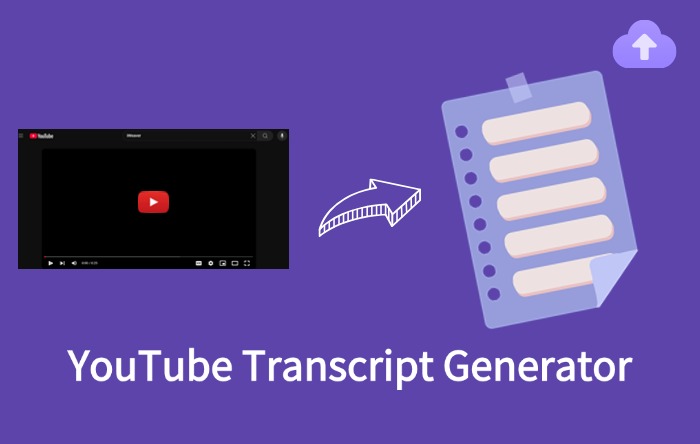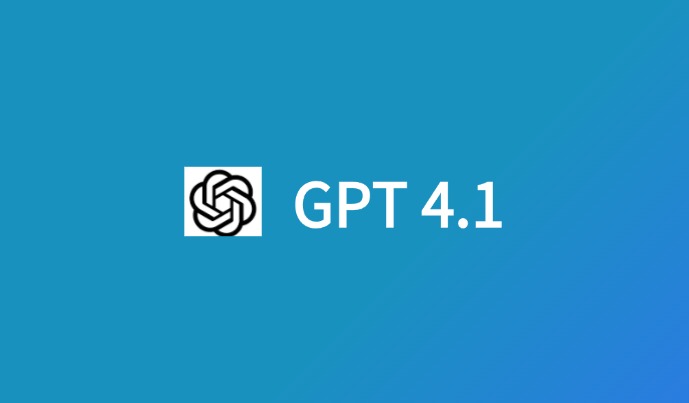As AI technology continues to advance, artificial intelligence has become a transformative force in content creation, enabling creators to produce high-quality work with unprecedented efficiency. OpenAI’s GPT-4.1, the latest iteration of its language model, stands out as a game-changer, particularly in the realm of scriptwriting and script generation. From crafting compelling narratives to automating repetitive tasks, GPT-4.1 is enhancing creativity, streamlining workflows, and providing measurable value to writers, filmmakers, marketers, and digital creators. This article will explore how GPT-4.1 optimizes scriptwriting tools and why it is poised to drive higher exposure and engagement for content creators.
The Evolution of AI in Content Creation
Before delving into GPT-4.1’s specific contributions, it’s important to understand the broader context of AI in content creation. Early language models like GPT-3 introduced the world to AI-driven text generation, capable of producing human-like text but often prone to inconsistencies and factual inaccuracies. GPT-4 improved upon this by integrating multimodal capabilities and advanced reasoning skills, setting a new benchmark for creative tools. GPT-4.1 builds on these foundations, offering enhanced performance, cost-efficiency, and adaptability, making it a powerhouse for content creators.
The demand for engaging scripts—whether for films, YouTube videos, podcasts, or marketing campaigns—has surged in the digital era. Creators face the pressure to produce fresh, high-quality content quickly while competing for audience attention. GPT-4.1 addresses these challenges by optimizing content creation tools, enabling writers to craft scripts that are not only creative but also tailored to specific audiences and platforms.
Key Advantages of GPT-4.1 for Scriptwriting and Script Generation
Enhanced Contextual Understanding for Tailored Scripts
One of GPT-4.1’s standout features is its expanded context window, which can support up to 1 million tokens across all model variants, including the compact GPT-4.1 mini and nano models. This enables the model to process and retain large amounts of information, ensuring script coherence over longer narratives. For scriptwriters, this means GPT-4.1 can maintain character arcs, plot consistency, and thematic depth across a 90-minute screenplay or a series of short-form video scripts.
For instance, a YouTube creator can input detailed character profiles, episode outlines, and tonal preferences into a GPT-4.1-powered tool. The model generates scripts that align with the creator’s vision while also incorporating platform-specific elements, such as attention-grabbing intros optimized for YouTube’s algorithm. This capability reduces the time spent revising drafts and ensures scripts resonate with target audiences.
Practical Impact: Platforms like Jasper.ai and Narrato already leverage similar AI advancements to create scripts tailored to specific formats, such as TikTok’s fast-paced style or LinkedIn’s professional tone. GPT-4.1’s contextual prowess takes these platforms to the next level, delivering audience-ready scripts that feel bespoke.

Superior Creative Reasoning for Compelling Narratives
GPT-4.1 introduces advanced multi-hop reasoning capabilities, tested on datasets like Graphwalks, enabling it to craft intricate narratives with nuanced emotional beats. Unlike earlier models, which might generate generic dialogue, GPT-4.1 produces scripts with authentic character voices, witty exchanges, and culturally relevant references. This is particularly valuable in script generation, where balancing creativity with adherence to genre conventions is essential.
Consider a screenwriter tasked with generating a short script for a sci-fi thriller. By inputting a prompt such as, “Write a 5-minute script for a dystopian short film featuring a rogue AI, with dialogue inspired by Blade Runner,” GPT-4.1 can deliver a scene with layered tension, philosophical undertones, and polished dialogue. The model’s ability to “think” through narrative arcs ensures the output isn’t just functional but emotionally engaging—a crucial factor in driving clicks and shares.
Case Study: Feedback from creators on platforms like Medium highlights GPT-4’s creative potential, with one user noting that a 90-minute script was generated in hours instead of weeks. GPT-4.1 builds upon this, offering faster iterations and richer storytelling, ideal for time-sensitive projects.

Multimodal Capabilities for Visual Storytelling
While GPT-4 introduced image processing, GPT-4.1 refines multimodal capabilities, with an impressive 72.0% score on Video-MME and 38.3% on Scale’s MultiChallenge. For scriptwriting tools, this means GPT-4.1 can analyze visual references—such as storyboards, mood boards, or competitor videos—and incorporate those insights into scripts. Creators can upload a rough video draft or a thumbnail sketch and request a script that matches the visual tone, enhancing alignment between script and production.
For example, a marketing team working on a product ad can share a video draft with GPT-4.1, which will analyze the visuals and suggest dialogue that complements the imagery while proposing pacing that maximizes viewer retention. This seamless integration between visual and textual creativity streamlines collaboration between writers and directors, ensuring the script is production-ready. iWeaver’s upcoming model upgrades could enhance this, integrating richer visual analysis.
Why It Drives Engagement: Scripts that align with visuals are more likely to resonate with audiences, as they create a cohesive viewing experience. Tools like Synthesia are already using AI to pair scripts with video elements, and GPT-4.1’s upgrades amplify this synergy.
Efficiency and Cost-Effectiveness for Scalable Creation
GPT-4.1’s efficiency is a major boon for content creators balancing quality and budget. The GPT-4.1 mini model cuts latency by nearly 50% and reduces costs by 83% compared to GPT-4, while the nano model starts at $0.10/$0.40 per million tokens. These savings make GPT-4.1 accessible to solo creators and small teams, enabling them to iterate on scripts rapidly without sacrificing quality.
For script generation platforms, this means faster turnaround times. A creator using a GPT-4.1-powered tool can quickly generate multiple script drafts for A/B testing—say, three different podcast intros with varying tones—in just minutes. This scalability is key for high-volume content strategies, such as daily social media posts or weekly video series, where speed is crucial for gaining a competitive edge.
SEO Advantage: Fast iteration allows creators to optimize scripts with trending keywords, improving discoverability on platforms like YouTube and Google. For example, a script infused with keywords like “AI tools 2025” or “scriptwriting hacks” can boost organic traffic, amplifying exposure.
Personalization for Audience-Specific Content
GPT-4.1’s improved steerability allows creators to fine-tune scripts for specific demographics, platforms, or cultural contexts. By analyzing user inputs and historical data, the model generates scripts that align with audience preferences, from Gen Z’s meme-heavy humor to corporate clients’ formal tone. This personalization is critical for engagement, as tailored content fosters stronger connections with viewers.
A practical example is a tool like Writesonic, which uses GPT-4.1 to craft marketing scripts. With GPT-4.1, these platforms can generate a webinar script that incorporates regional slang for an Australian audience or technical jargon for a B2B tech campaign, all while maintaining narrative flow. This flexibility ensures scripts feel authentic and relevant, driving higher click-through rates.
Pro Tip: To maximize exposure, creators can pair GPT-4.1-generated scripts with data-driven insights from tools like VidIQ, optimizing for platform algorithms and audience trends.
Real-World Applications of GPT-4.1 in Content Creation Tools
Video Content Creation
YouTube and TikTok thrive on compelling scripts that hook viewers within seconds. GPT-4.1-powered tools like Narrato’s AI video script generator produce intros that grab attention—think bold questions or shocking stats—followed by concise, value-packed narratives. For a 60-second TikTok, GPT-4.1 can craft a script with a viral hook, three key points, and a call-to-action, all tailored to trends like #LearnOnTikTok.
Example Prompt: “Write a 1-minute TikTok script about sustainable fashion, targeting Gen Z, with a humorous tone and a CTA to follow for more tips.” GPT-4.1 delivers a script that’s punchy, relatable, and algorithm-friendly, boosting shareability.
Podcast and Audio Scripts
Podcasters rely on scripts to maintain flow and engagement. GPT-4.1 enhances tools by generating conversational dialogue, complete with natural segues and audience prompts (e.g., “What do you think? Drop a comment!”). Its reasoning ensures episodes stay on-topic, even for complex subjects like tech or finance, while its efficiency supports weekly production schedules.
Impact: A podcast script generated in under 10 minutes can save hours of planning, allowing creators to focus on recording and promotion.
Marketing and Ad Scripts
For marketers, GPT-4.1’s ability to integrate SEO keywords and emotional triggers into scripts is a game-changer. Tools like Copy.ai use AI to craft ad copy, but GPT-4.1 takes it further by generating scripts that balance persuasion with authenticity. A 30-second product ad might feature a relatable pain point, a clear solution, and a memorable tagline, all optimized for conversions.
Data Point: According to Copy.ai, AI-generated marketing content can increase click-through rates by up to 20%. GPT-4.1’s precision amplifies this potential.
Screenwriting for Film and TV
Aspiring screenwriters benefit from GPT-4.1’s ability to generate polished drafts. By inputting a logline and genre, creators can receive a scene with vivid descriptions, authentic dialogue, and proper formatting. While human editing is still needed, GPT-4.1 reduces the barrier to entry, enabling more voices to enter the industry.
Success Story: A Medium post described a GPT-4-generated script that, with minor tweaks, secured a festival submission. GPT-4.1’s upgrades promise even stronger first drafts.
Conclusion: The Future of Scriptwriting with GPT-4.1
GPT-4.1 is a creative rocket, fueling scripts for videos, podcasts, ads, and films with speed, smarts, and personalization. It’s a lifeline for creators chasing deadlines and algorithms. Platforms like iWeaver, eyeing next-gen model upgrades, could unlock even deeper context, real-time tweaks, and hyper-accurate storytelling, reshaping how we create.
Ready to dominate? Try GPT-4.1 via Narrato or Writesonic, and pair with TubeBuddy for unbeatable reach. iWeaver’s upgrades are coming—stay tuned for smarter scripts!
FAQs
Q: Can GPT-4.1 write scripts for any platform?
Yes, GPT-4.1 can generate scripts for YouTube, TikTok, podcasts, ads, and more, adapting tone and style to fit each platform’s audience.
Q: How do I make AI-generated scripts feel unique?
Provide detailed prompts with specific characters, settings, and references, and edit the output to infuse your personal voice.
Q: Is GPT-4.1 cost-effective for small creators?
Yes, the nano model’s pricing of $0.10/$0.40 per million tokens makes it accessible for solo creators and small teams.
Q: Does GPT-4.1 replace human writers?
No, GPT-4.1 is a tool to enhance creativity, but human editing is still essential to ensure scripts are authentic and emotionally resonant.



